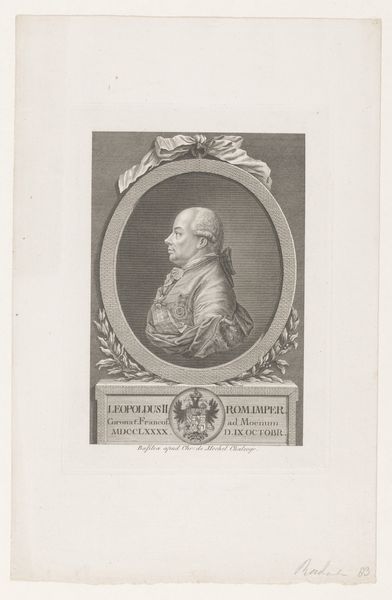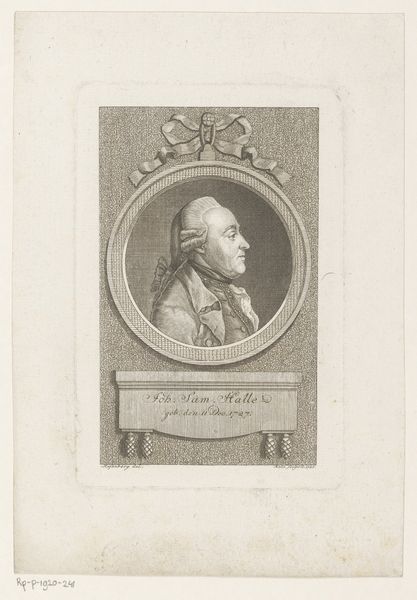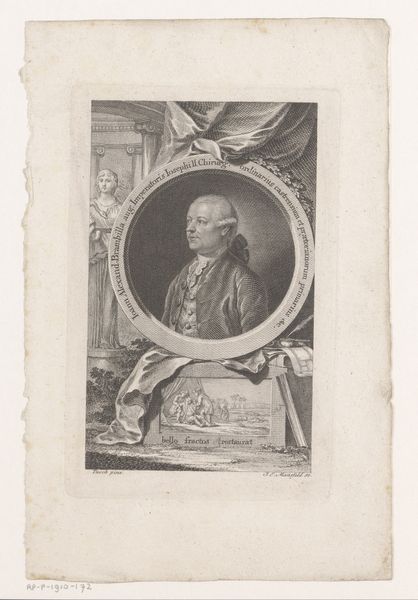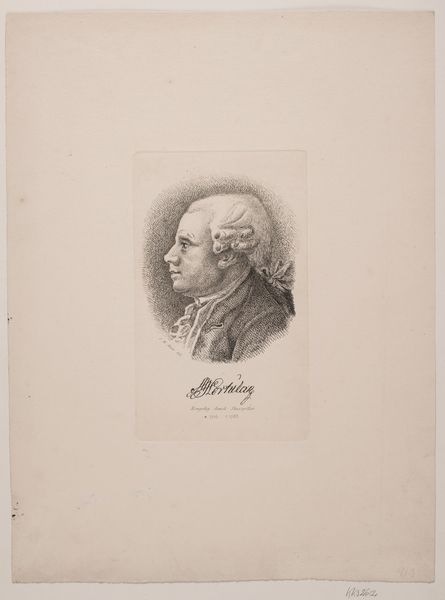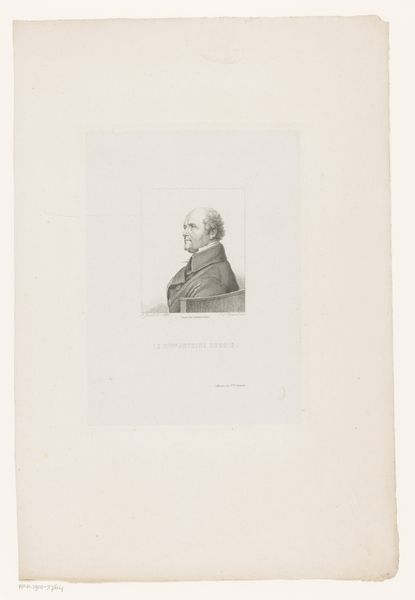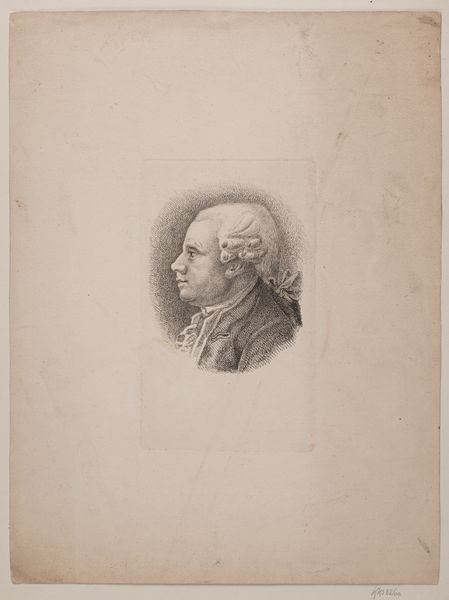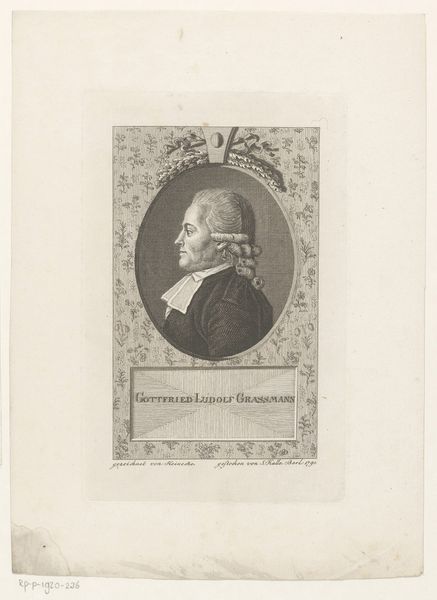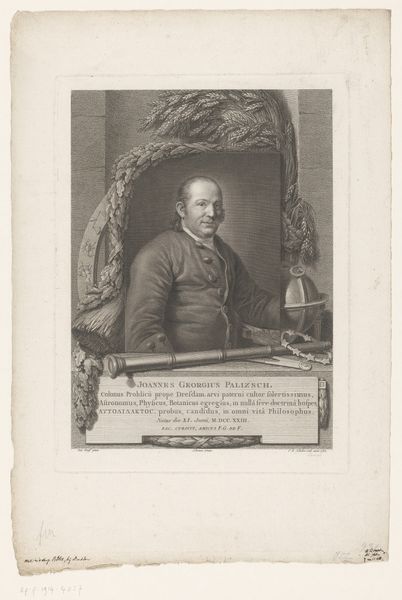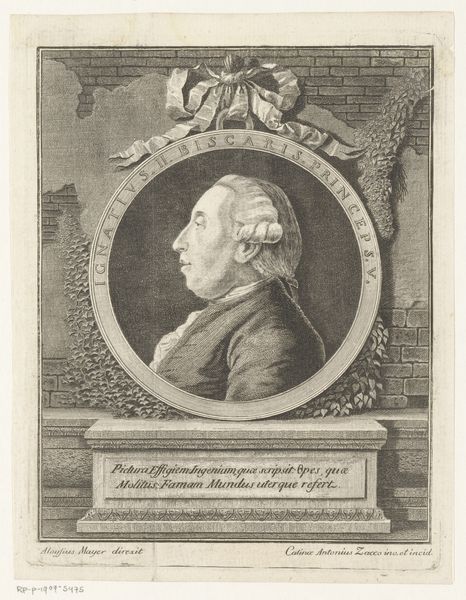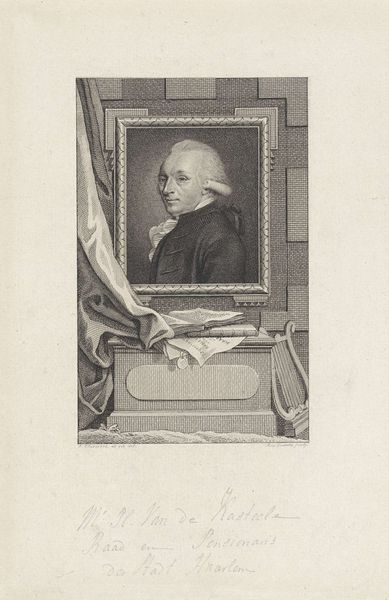
Dimensions: height 288 mm, width 228 mm
Copyright: Rijks Museum: Open Domain
Curator: Looking at this intriguing lithograph, etching, and print made in 1780, "Portret van Jacques-François Chéreau," now housed in the Rijksmuseum, I’m struck by the layers of representation. It’s a portrait of a man looking at a print, surrounded by portraits. Editor: My initial impression is that it evokes a strong sense of bourgeois intellectuality and the insular world of 18th-century European print culture. It seems designed to broadcast a specific form of class and social position. Curator: Absolutely. The details are telling. We can explore this print from Antoine Carrée and ask how the subject, Chéreau, a printseller himself, is deliberately constructed here. The crisp lines and the gradations of shade speak volumes about the mastery involved in the printmaking processes of the era. Editor: And it speaks volumes, too, about the complex networks of power and representation that underpinned such artistic production. Note how the images of children function within the visual economy; their relative innocence—or curated innocence—stands as a key element of the subject's identity as a member of the bourgeoisie and a man of substance. What sort of visual world does he participate in and promote? What’s being sold here isn't just art, but access, ideology. Curator: A key detail that I find captivating is his intense engagement with the print in his hands. You can see he's handling another print—likely another production of his shop—so we're viewing art within art, engaging viewers within viewers! Considering the physical materials and labour involved, how does this image reflect his identity as an entrepreneur? Editor: Looking closely, you see that his dress and manner are meticulously curated for this scene; a show of upward mobility achieved through skilled production of artisanal materials. Curator: It’s easy to appreciate how the creation and consumption of printed materials was vital to how social roles were reinforced through visual art. Editor: Thinking about its contemporary resonance, it highlights enduring power dynamics inherent in art markets, class structures and systems of representations of labor and value. It reveals the production of status, gender and power roles, too. Curator: Yes, there is plenty of potential to continue scrutinizing it to discover different points about production and position. Editor: Exactly! It has offered some interesting points to further contemplate its position in history.
Comments
No comments
Be the first to comment and join the conversation on the ultimate creative platform.
